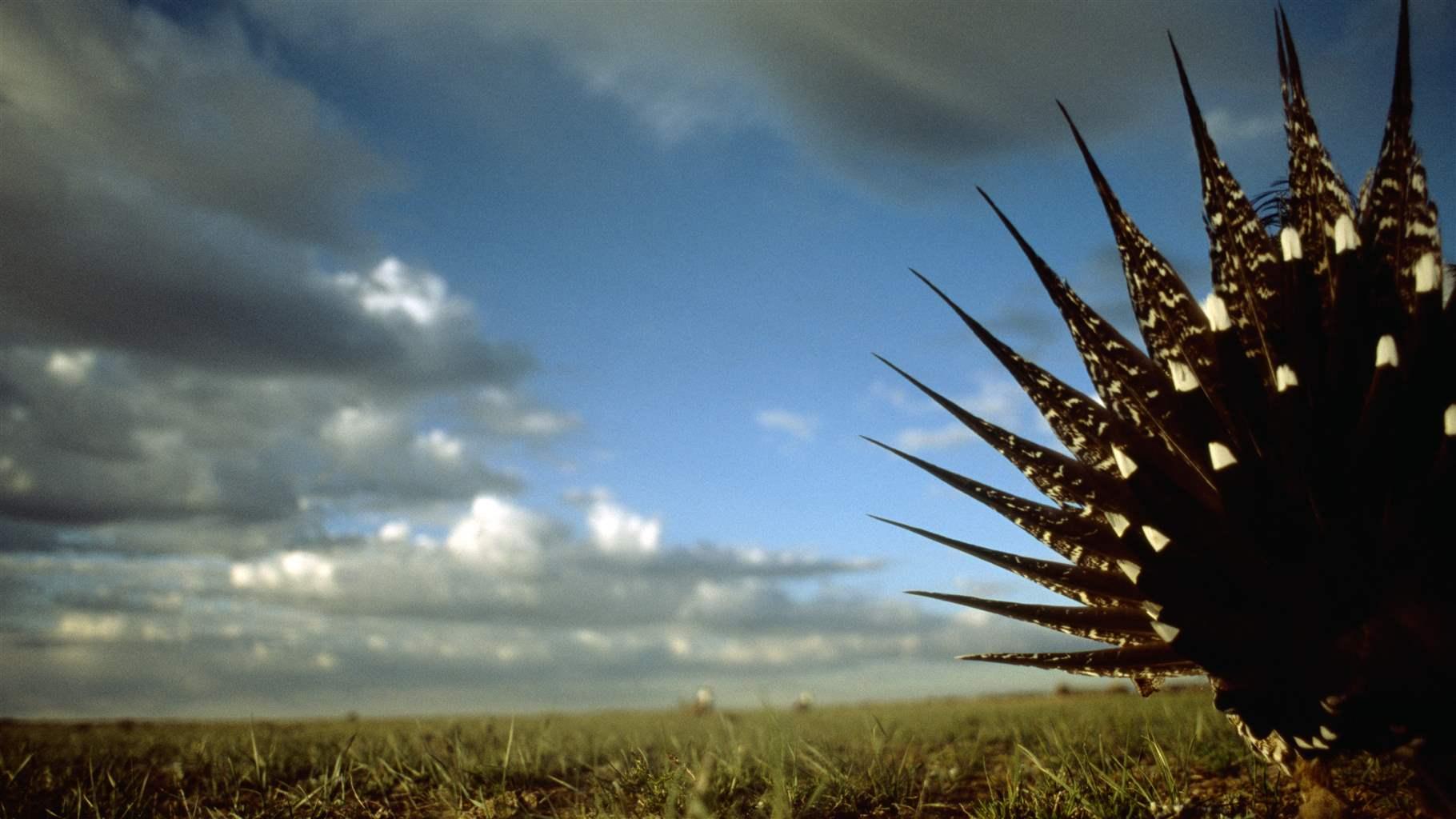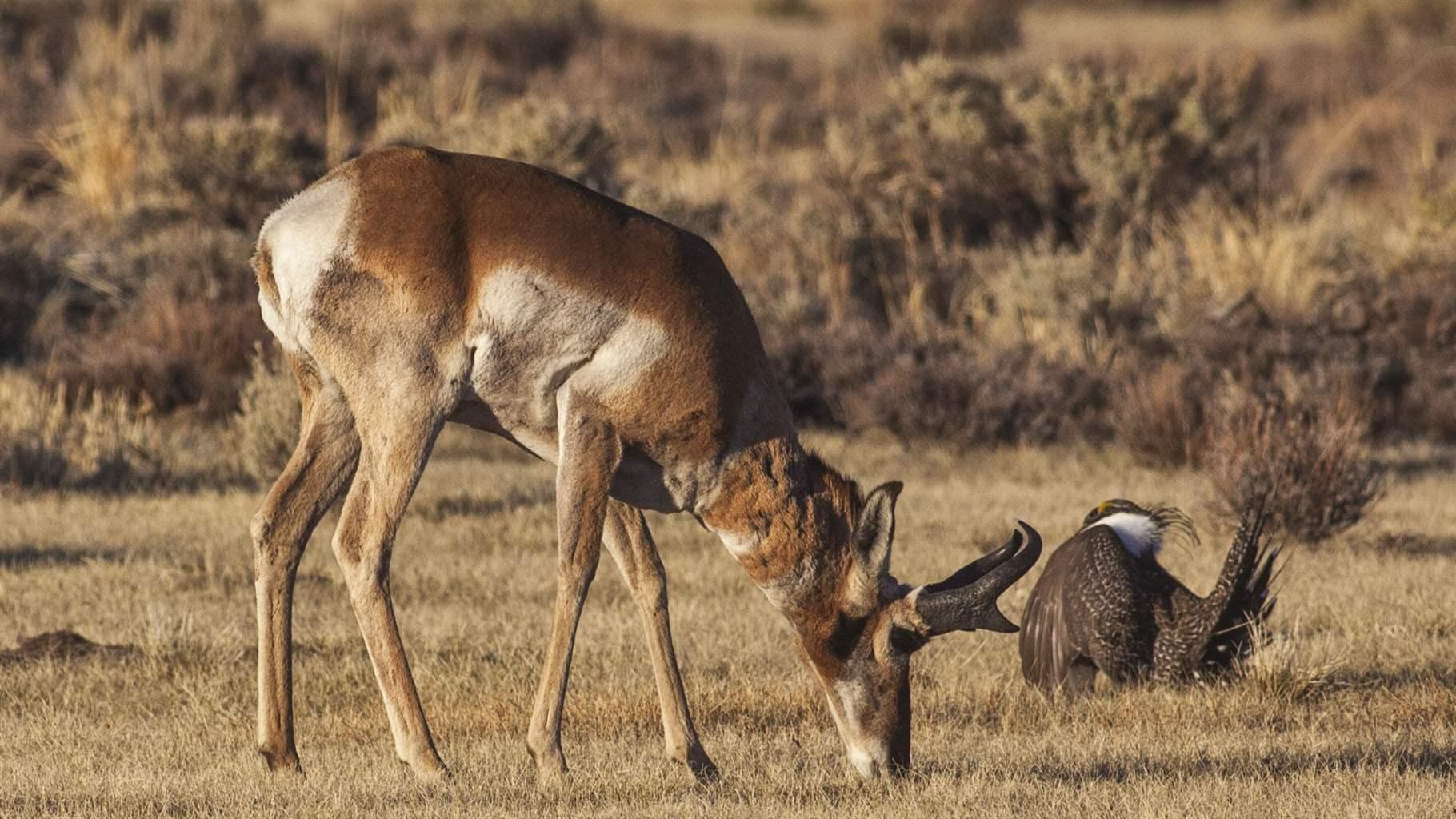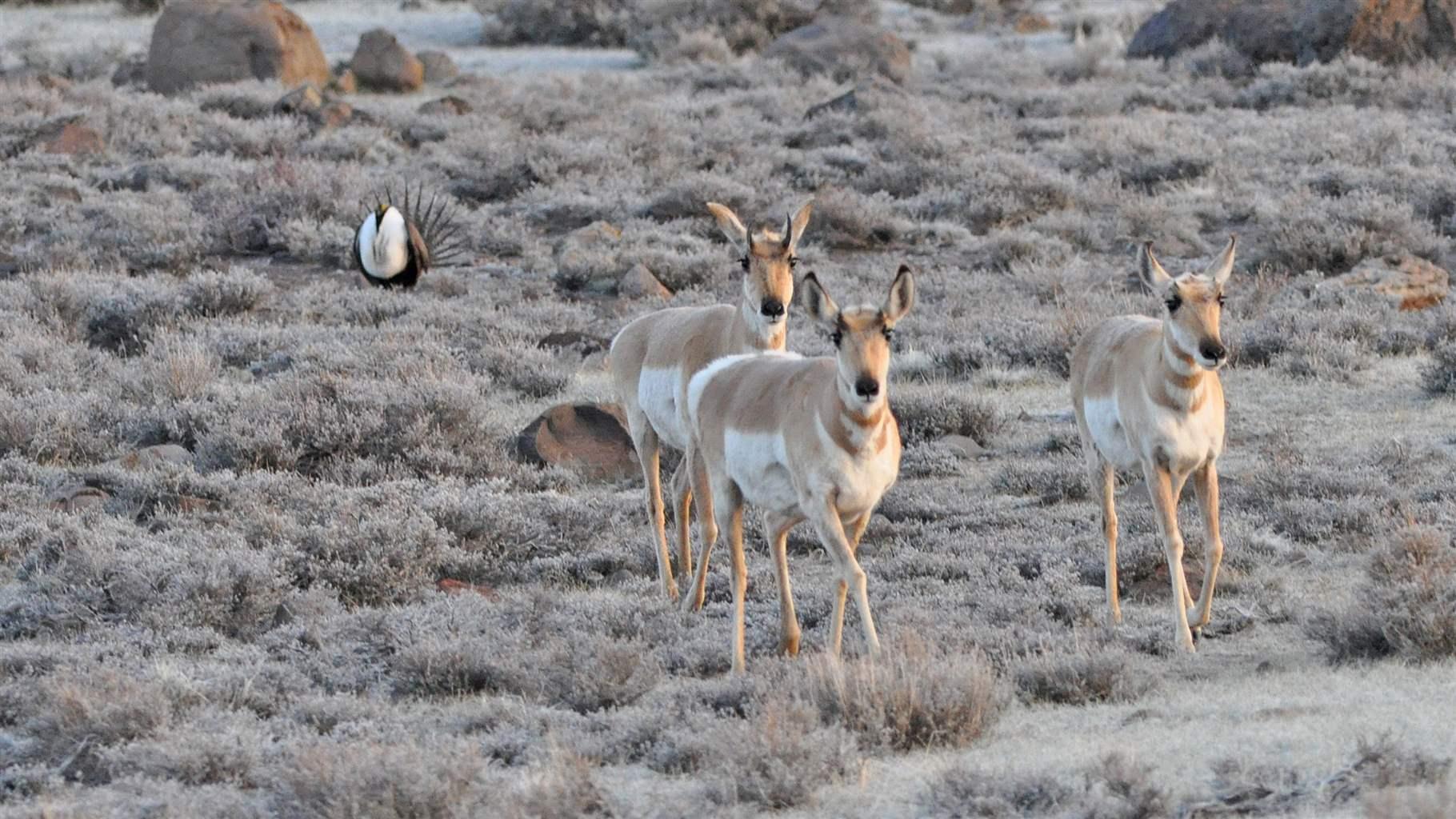Sage-Grouse Habitat, Vital for Many Species, Faces New Threat
Interior Department should protect the bird—and the herd—by honoring 2015 plans

The Bureau of Land Management’s 2015 greater sage-grouse conservation plans were widely hailed as a victory for the iconic bird and the many other species that share its Western sagebrush habitat. Unfortunately, the Department of the Interior recently decided to revise this broadly backed and science-based blueprint. The proposed changes could have significant and far-reaching effects on sage-grouse in America—specifically by weakening protections on the landscapes the species calls home.
Greater sage-grouse populations have plummeted more than 90 percent over the past century, and almost half of the American West’s sagebrush habitat has been lost to development, agriculture, wildfires, and exotic plant invasion. That’s of great concern because the funny-looking bird with the amazing mating dance is considered an indicator species for the health of the sage-steppe ecosystem and the 350 species that depend on it.
In a letter to Interior Secretary Ryan Zinke, a group of scientists who study sage-grouse wrote that increased development of oil and gas reserves in key habitat areas would drive further drops in both the amount and quality of sage-grouse habitat—and, the experts said, “may result in additional population declines.”
Rural voters understand the dilemma. In a 2015 poll commissioned by The Pew Charitable Trusts, bipartisan majorities from sage-grouse habitat areas expressed support for conserving the land, even if that meant restricting some energy development.
In developing the 2015 sage-grouse plans, BLM officials collaborated with a diverse group of stakeholders over a decade. The plans were based on the best available science, and responsibly balanced energy development, recreation, grazing, and other activities on more than 50 million acres of public lands in California, Colorado, Idaho, Montana, Nevada, North Dakota, Oregon, South Dakota, Utah, and Wyoming. Importantly, BLM gave land users certainty about what activities are allowed, and where, across the sage-steppe ecosystem.
The plans reduced the surface impacts of oil and gas development by steering most of this type of activity outside key habitat areas, to prevent further population declines that could result in the need for formal Endangered Species Act protections. But the Interior Department is now recommending eliminating that provision, which will likely result in increased energy development in priority habitat areas.
The 2015 management strategy for those vast areas should be given time to work, as part of a broader policy for wildlife and habitat. Secretary Zinke recently directed all Interior Department agencies, which manage much of our Western public lands, to conserve wildlife corridors, which big game use to migrate to and from their seasonal ranges. Pew and others hailed this announcement as an important step forward in ensuring that the wide-open spaces needed for these annual wildlife migrations would remain intact.
This big-game habitat is important not just to deer, elk, and antelope, but to the sage-grouse as well. The National Wildlife Federation this month released maps using data from state wildlife agencies and the Western Association of Fish and Wildlife showing that 70 percent of the sage-grouse habitat in six western states is “important or crucial for big game.” In other words, Secretary Zinke can accomplish many of his big-game habitat protection objectives by honoring the 2015 sage-grouse plans.
The Interior Department will take public comment on its latest proposal until Aug. 2. Pew encourages agency leadership to recognize the value of the 2015 sage-grouse plans and keep them intact to preserve habitat that 350 species depend upon, and America’s western way of life.








